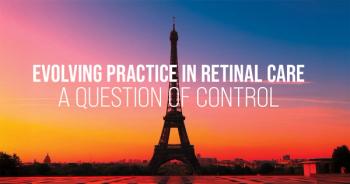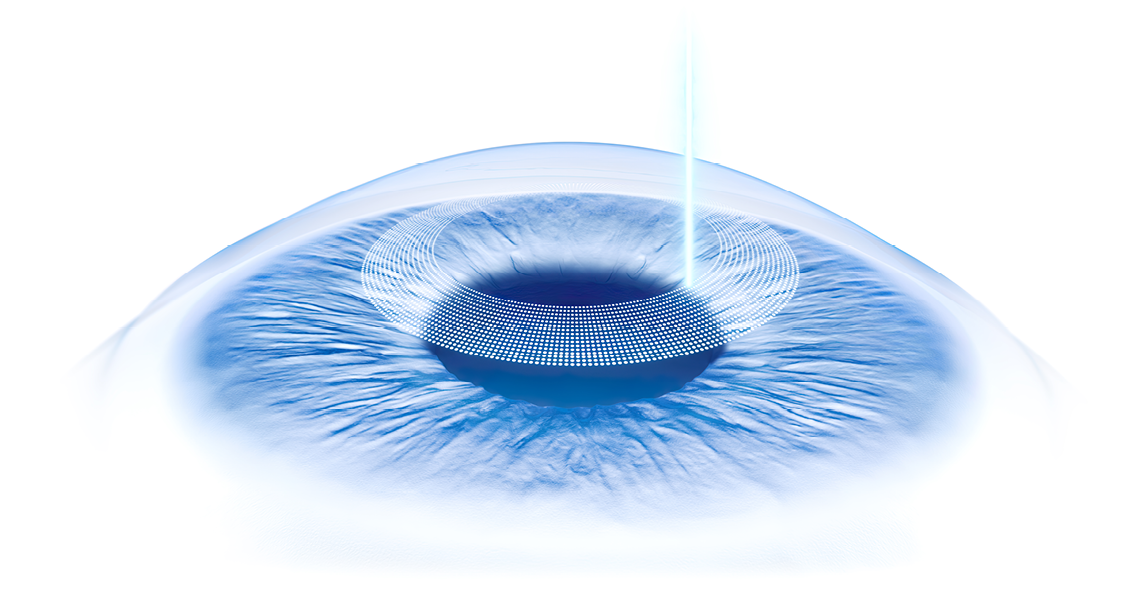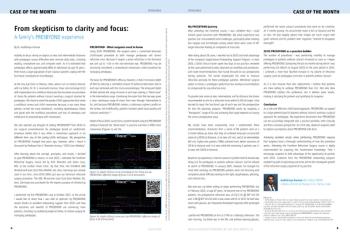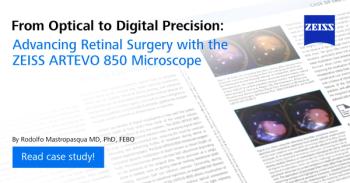
Clinical outcomes and patient satisfaction achieved with a corneal approach for managing presbyopia – a case with special significance

Dr. Arnaldo Espaillat decided to undergo ZEISS PRESBYOND and shares how his own experience led him to expand his refractive portfolio with this corneal-based approach for patients without cataracts.
I practice in the Dominican Republic where I specialize in cataract and corneal refractive surgery. The patients who I see often express frustration in needing to wear glasses in their daily life for activities involving near and intermediate vision, such as eating, reading, using their smartphones, and working with a computer. As an option for presbyopia correction, I tended to offer patients cataract surgery or clear lens removal with implantation of a trifocal or extended depth of focus intraocular lens (IOL).
As I approached my 60th birthday, I also began to feel an increasing burden from presbyopia. I found myself needing to wear reading glasses to work on my computer in my office and in the operating room so that I could see clearly when working with the laser or reading the labels on IOL packaging. I was not offering PRESBYOND® (Carl Zeiss Meditec AG; Jena, Germany) in my practice, but I decided to learn more about it as I considered surgical options for managing my presbyopia. Now I would like to share a ZEISS PRESBYOND case that holds special significance to me – it is my personal experience undergoing ZEISS PRESBYOND as my solution for gaining freedom from glasses.
My journey
I had been a low myope (-1.0 D) for much of my life, but I started becoming emmetropic at the age of 56. Then, as I got older, I became hyperopic. At age 60, my refraction was +0.50 -0.75 X 115 OD, +0.50 -0.75 x 92 OS. Although the change in refraction brought an improvement in my distance vision, it also made me more aware of the impact of presbyopia on my near and intermediate vision (Table).
Based on my age, I was expecting that I might need cataract surgery sooner than later. However, my OSI measured with the HD Analyzer was only 0.5. Although I could have undergone clear lens exchange with implantation of a presbyopia-correcting IOL, I preferred to evaluate alternatives due to potential additional risks of an intraocular procedure for a patient without cataract, such as reduced contrast sensitivity or dysphotopsia. Furthermore, although dysphotopsia associated with presbyopia-correcting IOLs has become less of a problem thanks to recent innovations in optic design, these bothersome symptoms can still occur with modern technologies. In addition, there are other low-incidence risks associated with cataract surgery, such as a possible rupture of the posterior capsule, vitreous loss, retinal detachment, or postoperative macular edema.
Turning my focus to other strategies for managing presbyopia, I spoke to a trusted ophthalmologist colleague and close friend, Dr Claudio Orlich from Costa Rica, who had undergone ZEISS PRESBYOND about 1 year earlier. PRESBYOND is a software from ZEISS for planning a customized binocular LASIK procedure that manages presbyopia and can correct refractive error. The ablation is designed to increase depth of field and provide a continuous range of quality vision from near to far by inducing a controlled amount of spherical aberration and creating a micro-anisometropia (≤1.50 D).
Dr Orlich told me that with ZEISS PRESBYOND he had achieved his goal of being able to work and live his daily life without needing near-vision glasses. His positive experience was one factor that gave me confidence to choose ZEISS PRESBYOND for myself. I also considered that the safety, effectiveness, and accuracy of the ZEISS PRESBYOND software is time-tested since the approach of micro-anisometropia has been performed for approximately 20 years. Up to 97% of patients tolerate the micro-anisometropia created with ZEISS PRESBYOND.1 Should a patient be unhappy with the outcome, however, in a second step it is possible to eliminate the anisometropia. Furthermore, unlike other surgical approaches for managing presbyopia, ZEISS PRESBYOND software is not associated with dysphotopsia, and it can maintain contrast sensitivity and stereoacuity.2
Considering all this information, I was fairly certain that I would choose ZEISS PRESBYOND to manage my presbyopia and that I would have the surgery done by PRESBYOND pioneer and expert, Dr Dan Reinstein, who also performed ZEISS PRESBYOND on Dr. Claudio Orlich. Hearing from Dr Reinstein that he had used ZEISS PRESBYOND on his father and chosen this option for his own presbyopia were the final pieces of information that convinced me to choose the procedure.
The preoperative examination for ZEISS PRESBYOND includes evaluations of corneal topography and pachymetry, and all my findings were within normal limits, confirming that I was an appropriate candidate for the procedure. The surgery was planned with a refractive target of plano OD (my dominant eye) and -1.50 0.00 x 0 OS. Just like any Femto-LASIK corneal refractive surgery, ZEISS PRESBYOND was a fast procedure, taking just minutes for both eyes to be treated. Furthermore, I felt no pain and visual recovery also occurred quickly. On the first day after surgery, I already had good binocular uncorrected vision at near and far (Table). Imaging showed no corneal folds, striae, or epithelial defects, a clear interface, and that the cut made with the femtosecond laser was exactly at the planned depth of 100 microns. My refraction was right on target (plano) in my right eye and slightly more myopic than planned in my left eye (-2.25 0.00 x 0).
At 4 months, the refraction in my right eye was stable and my left eye was slightly myopic (-1.00 -0.50 x 100). As summarized in the table, my visual acuity outcomes were consistent with my ability to function completely free of glasses. Having ZEISS PRESBYOND I achieved my goals of eliminating any need for reading glasses in the office and in the operating room. My only adaptation is that during surgery, I adjust the microscope ocular for my left eye (my “near vision” eye) to compensate for its -1.0 D refraction. Eight months after the surgery, my distance, intermediate, and near vision remain the same as at 4 months.
As expected, I never experienced glare, halos, or starbursts. I never had any difficulty driving, either during the day or at night, since I had the surgery. Because of the difference in refraction between eyes, I experienced a sensation of cross-blur during the first 3 to 4 months after surgery, usually when I was tired or thinking about it. However, that sensation became less and less frequent over time. At 8 months, I felt that my neuroadaptation was complete, and any sensation of cross-blur is very rare.
Conclusion
My personal experience with ZEISS PRESBYOND led me to decide that I should expand my clinic’s portfolio of options for presbyopic non-cataract patients by offering the corneal approach with the ZEISS PRESBYOND software. The clinical results and the fact that I am spectacle independent and happy convinced me of the clinical benefits that ZEISS PRESBYOND can offer to my patients. The knowledge I gained about ZEISS PRESBYOND when researching it as an option for myself along with the experiences I had through my personal surgical journey provide me with a wealth of valuable information I can share when counseling patients. I think that patients appreciate my unique ability to explain exactly what the procedure entails, the intraoperative experience, and what they can expect after the surgery.
Arnaldo Espaillat, MD is President and Medical Director of the Espaillat Cabral Institute, Santo Domingo, Dominican Republic. He is not a paid consultant of Carl Zeiss Meditec AG.
References:
1. Reinstein DZ, Carp GI, Archer TJ, Gobbe M. LASIK for the correction of presbyopia in emmetropic patients using aspheric ablation profiles and a micro-monovision protocol with the Carl Zeiss Meditec MEL80 and VisuMax. J Refract Surg. 2012; 28:531-541.
2. Brar S, Sute SS, Bagare SN, Ganesh S. Functional outcomes and reading speeds following PRESBYOND LBV using nonlinear aspheric ablation profiles combined with micro-monovision. J Ophthalmol. 2021;2021:2957443.
Newsletter
Get the essential updates shaping the future of pharma manufacturing and compliance—subscribe today to Pharmaceutical Technology and never miss a breakthrough.









































